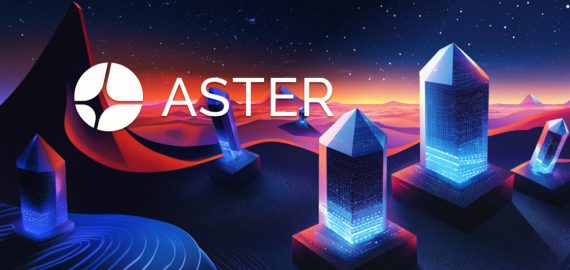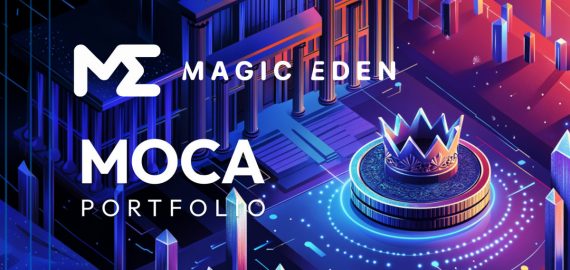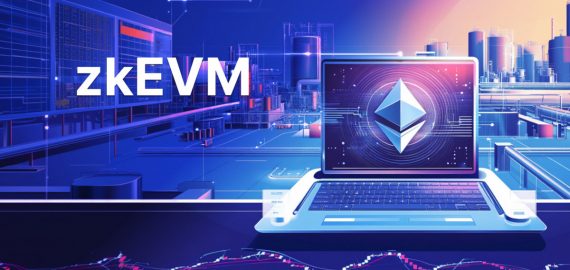Will NFTs Come Back or Crash in 2025?


In Brief
NFTs experienced significant trends in 2021, fetching multi-million dollar prices, prompting concerns about their worthiness in 2025.

Many things have changed in the realm of Non-Fungible Tokens (NFTs) over the last few years. They appeared on every corner in 2021. Not only were NFTs trending, but some of them were fetching multi-million dollar prices. However, many are beginning to wonder whether NFTs are still worthwhile as we start the year 2025.
Let’s see.
The NFT Market
After reaching a high in 2022, the NFT market has been a hot topic. Some sources estimate the 2023 market’s revenue to be at around $36.1 billion, set for a surge to over $217 billion in 2032.
Similarly, another source projects a CAGR of 30.3% for the NFT market between 2024 and 2029, hitting $84 billion in the last year.
Sheer optimism or pure logical reasoning, it’s not easy to put out such big numbers for a market that’s been through major disruptions in recent years, especially 2021.
The 2021 Crash
As most NFTs were driven mostly by speculation and excitement during the bubble rather than their intrinsic value, these tokens began to lose power after reaching their peak in 2021. These overpriced assets swiftly lost all attraction and value once the market started to wind down.
During that time, most investors were unaware of NFTs and relied on word of mouth to get into the market for these new tokens. Cryptocurrencies like Bitcoin, Ethereum, and DOGE reached new heights in 2021, and investors were fascinated with anything using blockchain technology.
The price of these tokens plummeted, however, since the craze didn’t persist. Last but not least, NFTs are just nostalgic digital collectibles with no practical use. That is why NFTs aren’t attractive to more people; they don’t have any real use, at least until now.
The 2025 NFT Outlook
Even if the market is down, the technology and ideas behind it are still significant, and experts are forecasting that the industry will mature beyond its early excitement.
One potential reason for this is the rise of Web3, particularly in the gaming sector. Starting in 2024, the NFT Gaming Market is projected to expand at a CAGR of 14.84 percent, reaching $942 billion by 2029. This forecast shows that the Web3 gaming industry has a lot of untapped economic potential, which may lead to more people using and investing in NFTs.
But beyond that, there are several drivers behind the NFT’s potential revival:
New Tech Integration
There has been an upsurge in the industry thanks to the combination of NFTs with AI, AR, and VR. Two examples are:
- AI-Based NFTs: Creatives are increasingly turning to AI to build NFTs with a life of their own, evolving in response to user input.
- Metaverse Integration: Many networks have grown and now include NFT-based properties, avatars, and treasures. One example is Sandbox.
Finding Utility in Real Life
Now, NFTs can be for more than just digital artwork and collectibles. By the year 2025, they have found practical uses like:
- Digital Tickets: A growing number of events and concerts are switching to NFTs as a secure digital ticketing system.
- Video games: The new generation of P2E games offers players NFTs that have practical and in-game value.
Growing Legitimacy
Governments and regulatory authorities have moved in to address problems concerning fraud and transparency. Important advancements consist of:
- Better Safety for Buyers: Anti-fraud safeguards are built into regulatory frameworks so that NFT markets may trade freely.
- General Recognition: NFTs have gained public legitimacy via partnerships with well-known businesses like Nike and Starbucks.
CryptoThink’s analyst, Sarah Kim, recently pointed out that NFTs in 2025 are not simply a fad; they symbolize “the future of ownership” and digital engagement.
Some Hurdles Along the Way
Despite the newfound optimism for the market and the promise of a crypto-friendly US administration, the NFT market still has major hurdles to work through.
Inherent Volatility
No one can dispute that the NFT market has undergone huge fluctuations in value—sudden surges followed by brutal falls.
In recent years, many researchers have pointed out that NFTs have the highest average volatility, with one source estimating the volatility between 20% and 90%. These volatility spikes could occur in the future.
While speculators love this dynamic, the ongoing volatility scares off investors looking for steady returns over the long haul. Finding a happy medium between novelty and long-term viability is a challenge for the sector.
Intellectual Property Issues
Do you know what you’re getting when you purchase an NFT? Does it affect the underlying picture in addition to the token? Fair use, copyright, and licensing have all been sources of much misunderstanding.
There have also been times when illegal art was made into NFTs. This is still a confusing area for both artists and consumers, but it should become more obvious as regulations get clearer on this area.
Mainstream Adoption
Lastly, if NFTs are still confusing and hard to utilize, they will never be able to realize their full potential. It can be hard to get started, and a lot of people still don’t see why they should go into a market where digital items are based on speculative value.
Integrating blockchain-based technology with Web2 (the conventional internet) is of paramount importance. The key to achieving widespread acceptance is to simplify interfaces, provide more realistic use cases, and provide better information.
Can 2025 Revive the NFT Market?
There is a good chance that these tokens will also have a renaissance in 2025 when the cryptocurrency market is predicted to see one of the largest bull runs ever. After starting off as digital collectibles, these tokens have recently expanded their potential uses to include gaming, real estate, and tickets, all of which are expected to drive up their price.
Plus, more and more nations like the United States show their support for crypto, NFTs, and blockchain. This may be crucial in attracting investors and sparking new ideas for these assets. Also, the growing adoption of AI in crypto can improve the user experience and the prices.
Disclaimer
In line with the Trust Project guidelines, please note that the information provided on this page is not intended to be and should not be interpreted as legal, tax, investment, financial, or any other form of advice. It is important to only invest what you can afford to lose and to seek independent financial advice if you have any doubts. For further information, we suggest referring to the terms and conditions as well as the help and support pages provided by the issuer or advertiser. MetaversePost is committed to accurate, unbiased reporting, but market conditions are subject to change without notice.
About The Author
Victoria is a writer on a variety of technology topics including Web3.0, AI and cryptocurrencies. Her extensive experience allows her to write insightful articles for the wider audience.
More articles

Victoria is a writer on a variety of technology topics including Web3.0, AI and cryptocurrencies. Her extensive experience allows her to write insightful articles for the wider audience.

















































